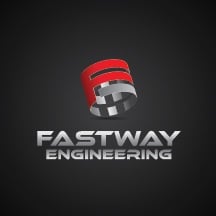Computer Aided Engineering (CAE) has been changing the way companies develop products for decades now. But just because you own a license of Finite Element Analysis (FEA) or Computational Fluid Dynamics (CFD) doesn't mean your capability steps up instantaneously. It takes time, and deliberate investment into getting the right hardware, software and knowledge in place. Through our own experiences, we've helped many companies climb up the learning curve of FEA and CFD. This curve is different for every company of course, but they all have the same trends. We've compiled together our notes for the last 20 years of Application Engineering to present our take on a Maturity Matrix for CAE (click to enlarge).

CAE Maturity Level
This is a relative scale to judge yourself against others or your own organizations goals. These levels are independent for each Category. For example, a company may be doing Simulations on every part before it's approved for Production using a Linear Static Stress Analysis (Utilization Level 3, Complexity Level 2). Alternatively, an organization may conduct a full CAE ROI analysis, but doesn't have the Buy-In of Engineering Management (Spending Level 4, Buy-In Level 2).
Overall CAE Utilization
To what level has your organization or business adopted CAE tools? Companies that do more systems reselling or customizing may not need a lot of CAE, and there for have a Guru Consultant in your Rolodex (Level 1). Level 4 is rarely achieved except for companies who are designing and manufacturing highly complex systems like in Aerospace and Automotive, or highly regulated industries like Medical.
Physics/Complexity
For Structural Analysis, this starts at a Linear Static Analysis, and increases towards Non-Linear and Dynamic Simulations. For Fluid Dynamics, this would start with a quick and simple Steady State CFD and increase to a Large Eddy Simulation for example. An example of a Level 4 Complexity would be a Fluid-Structure Interaction Simulation.
Software Deployment
How customizable is your code? If you can't access the native code directly or through scripts, that's Level 2. If you can, that's Level 3. If the author of the code is on payroll, that's Level 4.
Hardware Investment
This category is getting harder to asses (or rather, the assessment is moot) due to the quick rise of web-based tools and easy-access cloud CAE subscriptions. Smaller/Younger companies are going to have a tough time justifying On-Premise HPC, but it's still there at Level 3.
Knowledge Management
This is the topic most personal to us, because it is the one where so many companies short themselves. There's a place for Level 2, but if you're serious about using CAE tools, then you really need to be at Level 3 (Call Us). Want to get to Level 4 like the Industry leaders? Yep, we can help with that too.
Digital Data Management
This goes hand in hand with the sheer volume of analyses that are being conducted (see the "Overall CAE Utilization" category). If CAE results are a gate for part design approval, then that data should be revision controlled and archived like your designs are, if not then no worries. Another way to think about it - How critical is it to be able rerun an analysis and get the same exact results?
Spending Analysis
For some companies, CAE spending is on a "per project basis" (such as in the AEC Industry) and that makes the decision relatively easy. However, for the vast majority of product development teams, it requires a more thorough analysis. Here, the maturity levels increase as the financial analysis includes deeper dives into the "Total Cost" and ultimately a realizable ROI. Ultimately, somebody in the organization has to make a decision: Do I spend more money on CAE software this year, do I buy the latest 3D Printer, or do I hire another engineer? This is not an easy question to answer, we just hope that training costs make their way into the conversation!
Strategic Positioning
Ask yourself questions like, "Where do we as an organization/company want to be in 3 years?", "How is our competitiveness in the market?", "Do we know all of the strengths and weaknesses of our products?". Then ask yourself if innovating new products is going to get you where you want to be, and then finally ask yourself if CAE tools are going to enable that innovation. The higher the goals, and the higher the need for CAE, the higher Level you're at.
Organizational Buy-In
This one is absolutely critical - How high up the chain of command does CAE get visibility? If the CEO of your company knows how critical CAE is to their business, then you have a recipe for success. Anything short of that, could result in a lack of support when trying to deploy/leverage/invest in your product development process.
Factors for Success
So that's it! These are the categories that we've seen over the years which have the largest impact on the ability for companies to fully take advantage of CAE tools.
Successful CAE deployment requires the appropriate Hardware, Software, and Knowledge, but that is just the top of the iceberg. Building a high level of Maturity in your Company - a "CAE-Centric Culture" if you will - also takes Organizational Buy-In, Digital Data Management, and Assessments of both Strategic and Financial Impact.
Let us help.
At Fastway Engineering, we make sure our clients are getting their money's worth out of the software they've purchased, no matter where it comes from.


